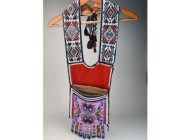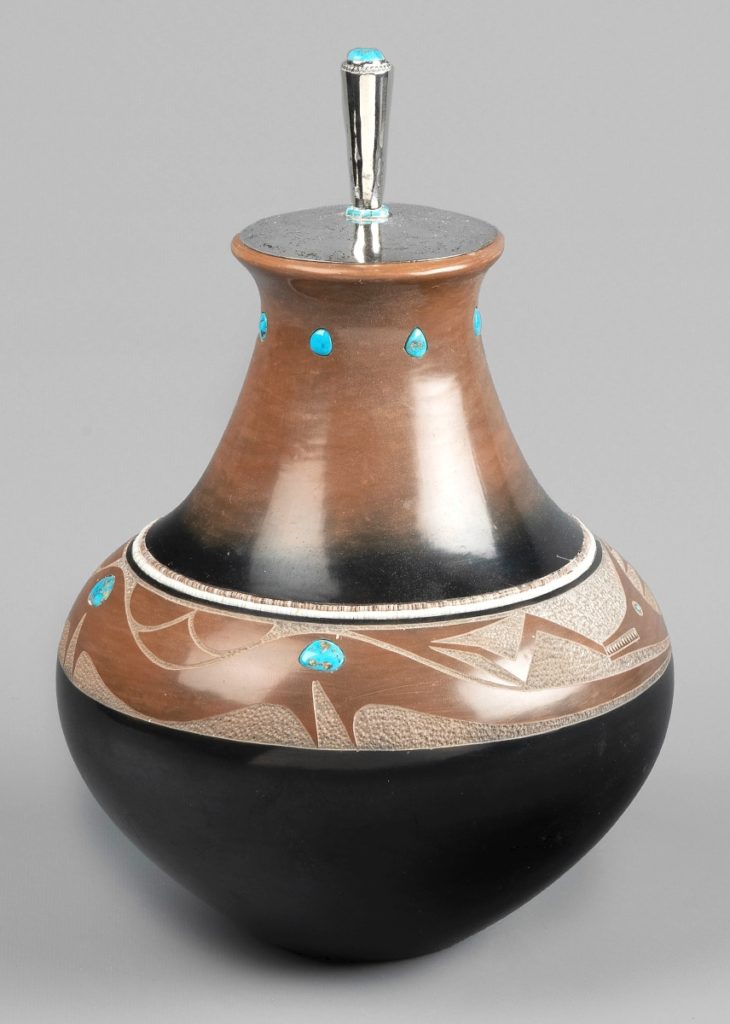
The sale’s top lot was a San Ildefonso inlay jar by Tony Da, which realized $61,000 against a $25/35,000 estimate. It was the third highest auction price ever paid for a San Ildefonso inlay jar by Da. The turquoise inlay jar with silver lid was studded with Da’s trademark turquoise, heishi, clam shells and silver. It came out of a private Pennsylvania collection and was 12 inches high.
Review by W.A. Demers, Photos Courtesy Santa Fe Art Auction
SANTA FE, N.M. – The third highest auction price ever paid for a San Ildefonso inlay jar by Tony Da (1940-2008) capped Santa Fe Art Auction’s three-day sale on February 11, realizing $61,000, against a $25/35,000 estimate. The turquoise inlay jar with silver lid was studded with Da’s trademark turquoise, heishi, clam shells and silver. It came out of a private Pennsylvania collection and was 12 inches high. Da, whose life was cut short in a motorcycle accident, was called a “rock star” of his craft by King Galleries, breaking cultural barriers as a “modern Indian,” steeped in San Ildefonso Pueblo tradition but living in a contemporary world. A grandson of Maria Martinez and the son of Popovi Da, his precision designs and techniques revolutionized Pueblo pottery and created a new vocabulary for the art.
The first sale of the year for Santa Fe Art Auction focused on one of the house’s most renowned areas of expertise, Native American arts, comprising more than 600 lots and totaling nearly $1 million with a 96 percent sell-through by lot. “The top selling lot, a very rare example of Tony Da’s work, was highlighted by Charles King at an educational talk during our Friday night reception,” said Gillian Blitch, president and chief executive officer at Santa Fe Art Auction. “King co-authored with Richard Spivey the outstanding book, The Life and Art of Tony Da, and pointed out that this pot, featuring Da’s classic blackware with sienna tones, inlaid with turquoise, heishi and clam shell, along with a silver lid, was one of only two such pots Da ever made. The other is in the Philbrook Museum.”
Also by Da, an etched Deer plate, circa 1970s, brought $13,750. It was from a private Oklahoma collection, was inscribed “DA” and was 6¾ inches in diameter.
“Over the course of three sessions, the auction provided a remarkable representation of every Pueblo and Southwestern culture from the turn of the Nineteenth Century through the most contemporary iterations of the present day, including all the classic media that Native American artists and craftspeople have exemplified during that period,” said Blitch.
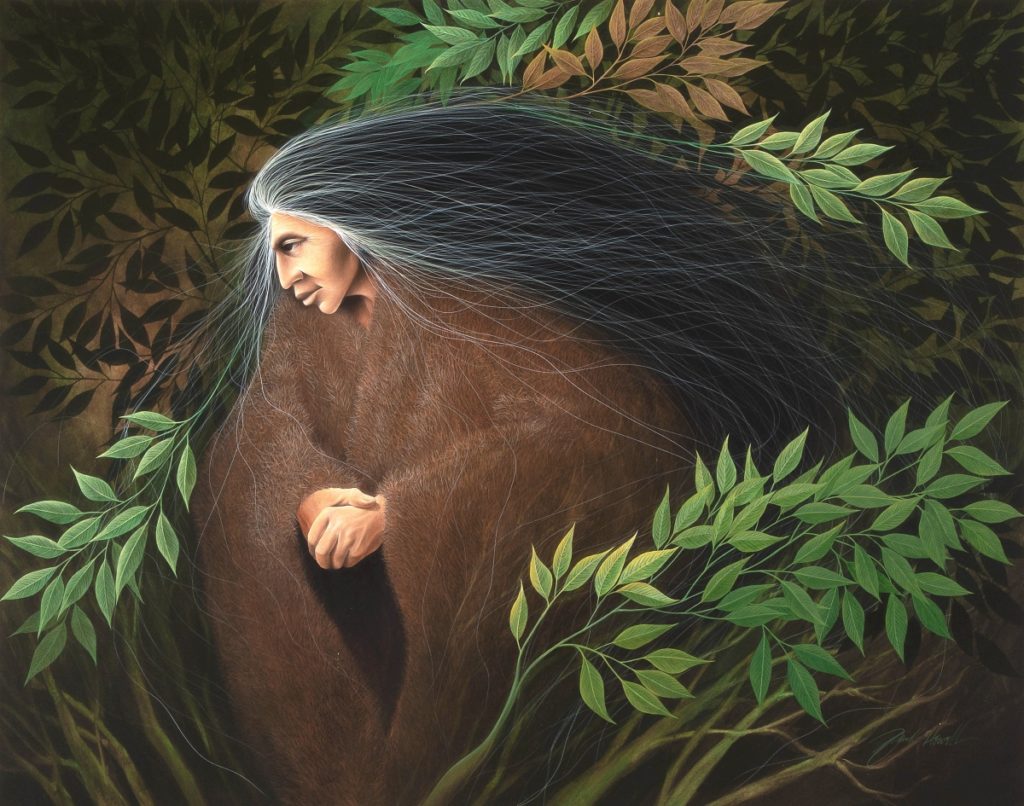
There was a run of works by Lakota Sioux artist Frank Howell, the highest price among them attained by “Spring Matrix,” an acrylic on canvas blending a Native figure in a lush woodland setting, which leapt from a $6/9,000 estimate to finish at $28,060, a new auction record.
On offer was basketry from early Skokomish to contemporary Hopi; weavings from a Third Phase Navajo chief’s blanket to late Twentieth Century pictorial rugs; pottery from Thirteenth Century Casas Grande to modern masters Tony Da, Kathleen Wall and beyond; jewelry from early Twentieth Century coin silver cuffs to the work of Charles Loloma, Kenneth Begay and Lloyd Kiva New; beadwork from early Arapaho to rising star Jamie Okuma; paintings from Stephen Mopope and Oqwa Pi to T.C. Cannon, Fritz Scholder, Tony Abeyta, Frank Howell and many more.
The firm has made a market in paintings by Fritz Scholder (Luiseño, 1937-2005), whose unique perspective on the Native American experience broke long-standing clichés by doing a pop art series that sought to deconstruct romantic images of Native America. An oil on canvas by Scholder, “The Border #2,” depicting a shadowy figure breaching a void in a landscape, sold for $42,700. From a private collection in New Mexico, the work was signed upper left and inscribed verso, and measured 80 by 68 inches.
Blitch said that another thrilling artwork was a rare original painting by T.C. Cannon (1946-1978), an important Native American artist of Twentieth Century. Completed in Taos in 1974, a depiction of the moon and stars over Taos in silver and gold metallic paint on dark lavender colored paper, went out at $39,650, the third highest price paid at auction. According to Blitch, the only other painting known to exist from this series resides in the permanent collection of the Hood Museum at Dartmouth College.
A run of works by Frank Howell (Lakota Sioux, 1937-1997) achieved notable results. “Spring Matrix,” an acrylic on canvas blending a Native figure in a lush woodland setting, leapt from a $6/9,000 estimate to finish at $28,060, a new auction record. From a private California collection, it was signed lower right and measured 48 by 60 inches.
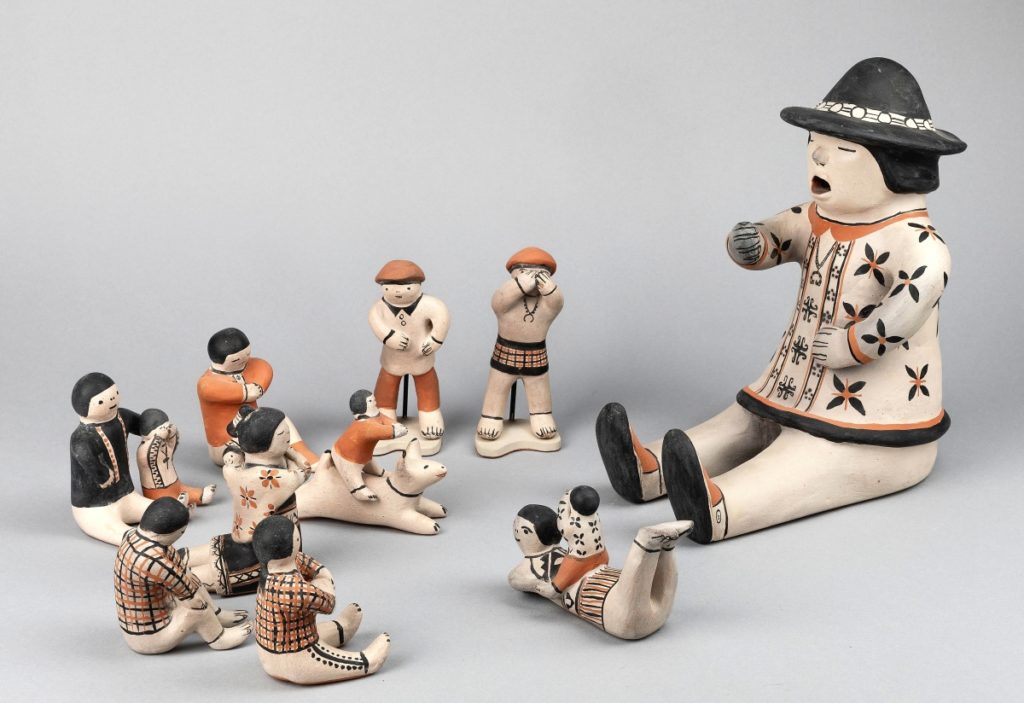
A charming tableau by Helen Cordero featuring a large figure of an elder conducting “Children’s Hour” to a rapt audience of youngsters was bid to $6,710.
“Grandmother’s Winds,” 1996, also by Howell, was estimated $2/4,000 but did much better, bid to a final price of $19,520. The 14-by-31-7/8-inch oil on canvas was signed and dated lower right and listed provenance to the Frank Howell Gallery in Santa Fe. Likewise, “An Old Wind Whispers,” 1986, with a palette of aqua, teal, white and brown, realized $15,000, and an untitled (Figure) from 1997 settled at $10,625.
Born in Sioux City, Iowa, Howell was a central figure in the Southwest Native art movement and was best known for creating meticulously painted portraits of Native Americans. His paintings drew inspiration from his own Lakota Sioux heritage, and his art captured the relationship between the physical and spiritual worlds in the culture. He moved to Santa Fe in the late 1960s where he opened the Howell Gallery.
A sculpture highlight by Allan Capron Houser (Chiricahua Apache, 1914-1994) was an untitled alabaster piece of mother embracing her child. It was from a private New Mexico collection, 20¼ by 12 by 12¼ inches, and found a buyer at $13,750.
Contemporary artist Tony Abeyta is a Navajo (Diné) painter from Gallup, N.M. He is most well known for mixed media paintings and oil landscapes of the American Southwest. His subject matter includes the New Mexico landscape, ancestral Navajo iconography and American Modernism. Fetching $12,500 was “Twin Stargazers,” 1995, channeling the twin miracle-performing sons in Navajo mythology.
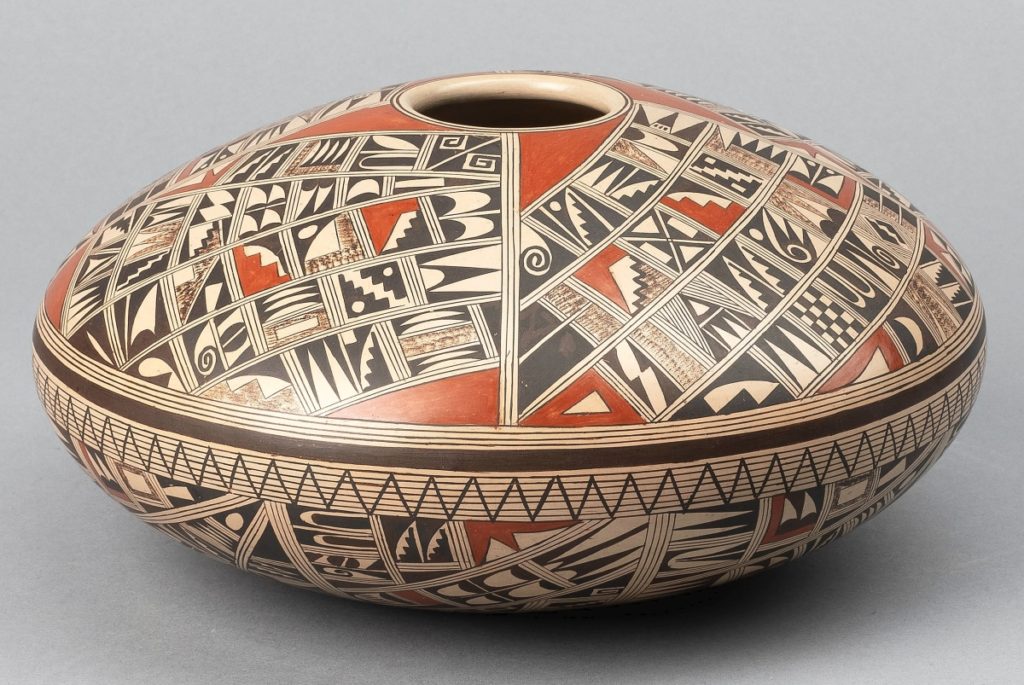
A large polychrome seed pot by Rondina Huma took $5,124.
Beyond the fine art, the three days saw strong prices for Native textiles and pottery. The highest price achieved for a Navajo textile was posted for a Diné [Navajo] “Crystal Textile” fashioned with handwoven yarns, natural and aniline dyes. Measuring 135 by 67 inches, it went out at $7,320. Fetching $4,636 was a similar, smaller Diné [Navajo] textile, 94 by 60 inches, which outperformed its estimate of $2,5/3,500.
Earthenware highlights included a blackware Feather plate by Maria Martinez (San Ildefonso, 1887-1980) and Popovi Da (San Ildefonso, 1923-1971). The fired clay piece had a diameter of 15 inches and settled at the top of its estimate, bringing $9,150.
A Zuni polychrome Deer jar, circa 1890s, 11¾ inches high and 14¼ inches in diameter was bid to $5,856, and a large polychrome seed pot by Rondina Huma (Tewa/Hopi, b 1947) changed hands for $5,124. Titled “Children’s Hour,” Helen Cordero’s (Cochiti, 1915-1994) group of fired clay figures depicting an elder in conversation with children in various poses charmed its way to $6,710. The largest figure was 11¼ by 6 by 9½ inches, while the smallest was 2 by 2 by 2½ inches. The tableau came out of a private New Mexico collection.
Prices given include the buyer’s premium as stated by the auction house. For information, www.santafeartauction.com or 505-954-5858.



















